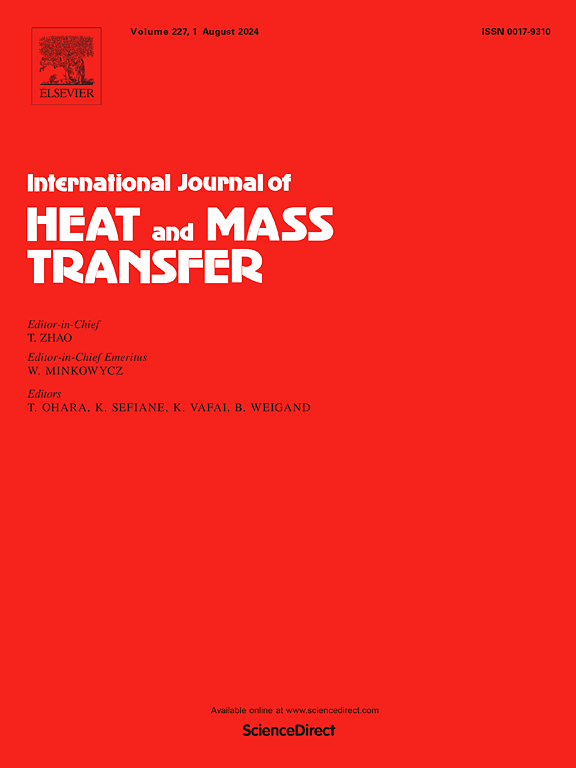A study on the thermal mixing and fluctuation characteristics of high-temperature mixing valves
IF 5
2区 工程技术
Q1 ENGINEERING, MECHANICAL
International Journal of Heat and Mass Transfer
Pub Date : 2025-07-04
DOI:10.1016/j.ijheatmasstransfer.2025.127488
引用次数: 0
Abstract
The high-temperature mixing valve is widely used in petrochemical flue gas treatment systems to precisely control the inlet temperature; however, its internal flow and thermal fluctuation characteristics have not been sufficiently studied. The Detached Eddy Simulation (DES) method is employed in this study to analyze systematically the mixing mechanism of cold and hot fluids, temperature profile, flow field distribution, and vorticity distribution within the mixing valve. It is found that as the valve opening rises, the throttling effect decreases, and the distribution of high-temperature gas varies from the valve body center region to the entire valve chamber. The direction of the high-temperature jet on the downstream side of the valve core is shifted toward the main flow direction. Furthermore, the extension, rupture, and merging of different types of turbulence vortices within the valve significantly improve heat exchange efficiency. The study also predicts thermal fatigue failure is likely to occur in the lower regions on both sides near X = 250 mm of the valve core at valve openings of 0.2L and 0.4L . This research provides new theoretical support for the design optimization of high-temperature mixing valves, which helps to improve the thermal efficiency of flue gas treatment systems, extend equipment lifespan, and increase overall reliability.

高温混合阀的热混合及波动特性研究
高温混合阀广泛应用于石油化工烟气处理系统中,用于精确控制入口温度;然而,对其内部流动和热波动特性的研究还不够充分。本研究采用分离涡流模拟(DES)方法,系统分析了冷热流体的混合机理、混合阀内的温度分布、流场分布和涡度分布。研究发现,随着阀门开度的增大,节流效果减小,高温气体的分布从阀体中心区域向整个阀腔变化。阀芯下游侧高温射流方向向主流方向偏移。此外,阀内不同类型湍流涡的扩展、破裂和合并显著提高了换热效率。研究还预测在阀芯X = 250mm附近两侧阀芯下部区域在阀开度为0.2L和0.4L时可能发生热疲劳失效。该研究为高温混合阀的优化设计提供了新的理论支持,有助于提高烟气处理系统的热效率,延长设备寿命,提高整体可靠性。
本文章由计算机程序翻译,如有差异,请以英文原文为准。
求助全文
约1分钟内获得全文
求助全文
来源期刊
CiteScore
10.30
自引率
13.50%
发文量
1319
审稿时长
41 days
期刊介绍:
International Journal of Heat and Mass Transfer is the vehicle for the exchange of basic ideas in heat and mass transfer between research workers and engineers throughout the world. It focuses on both analytical and experimental research, with an emphasis on contributions which increase the basic understanding of transfer processes and their application to engineering problems.
Topics include:
-New methods of measuring and/or correlating transport-property data
-Energy engineering
-Environmental applications of heat and/or mass transfer

 求助内容:
求助内容: 应助结果提醒方式:
应助结果提醒方式:


